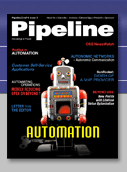|
|

article
page | 1 | 2 | 3 | 4 | 5 | 6 | 7 | 8 | 9 |
business goals slightly differ, but the main thrust of this activity is common:
- CASCADAS: “Components dynamically self-organize as needed with each other and with the already deployed ones, and will start interacting so as to provide the desired functionality in a situation-aware way without (or with very limited) configuration efforts.”
- MCI’s NewWave: Services dynamically deploy, find and connect to other needed business and framework services or else dynamically launch those needed services. Once launched, component services maintain themselves and their existence through all network perturbations and failures unless specifically requested to terminate.
- FineGrain Networks: Soft services dynamically deploy, identify from situational and location information the component services they need and then dynamically interact with network and VPN configuration services to either attach to an existing VPN or dynamically deploy a VPN with the required QoS.
Putting it all together
Rick Thau of The Thaught Process is a skeptic: “The biggest problem with some of the newer systems is that they try to "boil the ocean" by doing to many different things in an automated fashion. … chaos automated is just a disaster happening faster.”
Whereas Serenity sees: “The concepts of system and application as we know them today will disappear. Static architectures with well-defined pieces of hardware, software, communication links, limits and owners will be replaced by architectures that will be sensitive, adaptive, context-aware and responsive to users' needs and habits”
In perhaps the best survey article on the field of AN, Konstantinou describes how high the wall is which must be climbed to build autonomic networks:
“Attempts at automating network operations have so far met with limited success due to the design of existing management architectures. Current architectures assume a manager-agent (client-server) model in which element performance and status information is presented to human managers. Managers must collect and interpret this information in relation to network policy. Policy enforcement requires manual change management over distributed, heterogeneous element configuration
|
|

repositories. Managers are further required to manually log and coordinate configuration updates across multiple elements due to lack of transactional configuration access mechanisms. These architectural limitations create significant safety, scalability, and reliability challenges to automation.” [Towards Autonomic Networks; Alexander V. Konstantinou, Ph.D. Thesis; Columbia University, New York, NY, USA; October, 2003]
Dan Druta of AT&T remains a qualified optimist: “The reality is that in some areas there's significant progress being made. A lot has to do with the proliferation of Service Oriented Architecture concepts and the mandatory requirements to treat components as services. This forced some mentality shift within the vendor community as well as providers and IT organizations in general. Then another big thing came in the form of Software As A Service (SaaS) where SLA's where required and as a consequence the functions mentioned earlier had to be there. Also this combined with the Web 2.0 buzz around mesh applications, emphasized the need to treat any endpoint as a system and any system as a subsystem. Technology wise there's progress being made in the "spaces" area. Jini is a perfect example where there’s now a programmers toolkit available to create peer to peer applications.”
We’ll apply the qualified optimist label to ourselves too. The major components have been identified, groups of talented people are focused on task, and there are new revenue models waiting in the wings. While we suspect that humans will slow up progress given our immense capability to resist change, the laws of nature, and of economics, will out: Autonomic Networks will emerge to make Autonomic Communications possible. And they are just too neat to deny.
article
page | 1 | 2 | 3 | 4 | 5 | 6 | 7 | 8 | 9 |
|
|
|
|



